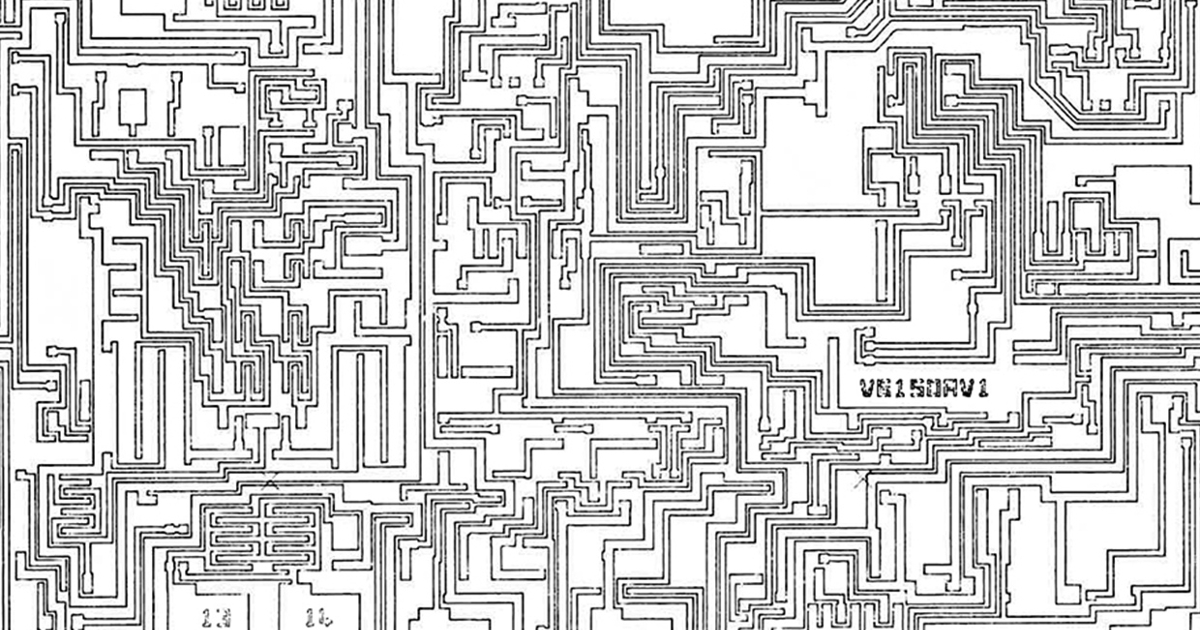
FM radio is now a standard feature in a staggering number of gadgets, including alarm clocks, wristwatches, and music players. But before the early 1980s, conventional radio functions were costly and time consuming to build. Manufacturers typically had to make 10 to 14 circuit adjustments, known as alignments, to ensure that reception was good and that the frequency shown on the radio’s tuning scale was correct. What changed was the advent of the Philips TDA7000, a chip that made cheap, easy, and ultrasmall FM radio possible.
Working in Philips’s Netherlands R&D lab in the mid-1970s, engineers Dieter Kasperkovitz and Harm van Rumpt had managed to fit an entire mono FM receiver, from antenna input to audio signal output, on a 3.5-millimeter-square chip. The only external pieces were an adjustable resonant circuit for tuning the radio to the desired frequency and as few as 14 ceramic capacitors, plus the power supply and speaker. Only one alignment was needed.
Ebullient, the duo patented their creation in 1977 and presented it to the Philips corporate team shortly afterward. The meeting didn’t go as hoped, with the radio-manufacturing group opposed to moving forward.
“It was rejected, period,” Van Rumpt explains. “The Philips audio people said it was not possible to do this—they hadn’t invented it, so it must be impossible, right?—and so [the TDA7000] was more or less put in a drawer.”
That might have been the end for the chip were it not for a third man: Peter Langendam, an atomic and molecular physicist who was then managing a factory at the Philips components subsidiary Valvo, based in Hamburg.
Langendam believed in the technology so strongly that he went rogue, secretly bringing some sample chips from the Netherlands back to Germany to produce a few demo radios. He sent those radios to Japanese clients who went wild for the technology, signing orders for a million chips.

The risk was enormous, but it worked. With the Japanese market proven, Philips was on board—as was everyone else. Suddenly it was possible to cram FM radios into, well, just about everything: alarms, music players, and even wackadoo novelties like sunglasses. Hey, why not? The TDA7000 and its variants made radio capabilities tiny and inexpensive.
The chip changed the DIY radio world, too, making it vastly easier for hobbyists to build an FM radio from scratch and without the endless futzing with a half dozen components to get the dang thing to work. To date, more than 5 billion TDA7000s and variants have been sold.

The TDA7000 was a hit, but its success had demanded that the members of the team put their jobs at risk. Over time, Van Rumpt and Kasperkovitz tired of the corporate hoop-jumping at Philips. In 1998, they teamed up with Langendam and another Philips buddy, Harry Schoonheijm, to create their own “inventor company” for transceiver systems.
The naming decision was easy: They would become “ItoM,” shorthand for Semiconductor Ideas to the Market.
“Actually, bringing ideas to the market is a hell of a job—a big risk,” Kasperkovitz says. “Some people want to just talk and talk about things.”
Langendam retired from ItoM in 2015, but the other three continue to lead the company in creating new low-noise amplifiers, mixers, transmitters, and more. And despite the naysayers of the ’70s, the ItoM team looks back on the TDA7000’s early days with wistful amusement.

“It was a nice environment in that we had a lot of freedom,” Van Rumpt says. “We could do crazy things without the need to get budgets and a million teams to sign off on it.” Kasperkovitz concurs: “It was, you could say, a good old time.”
This article appears in the July 2018 print issue as “Radio Free Everywhere.”
